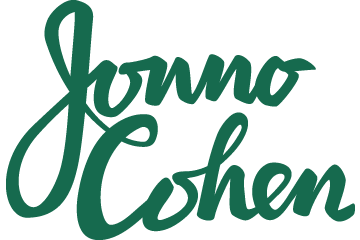Running is an intriguing sport. Indeed, for many of us, 'sport' may be a misnomer. Our focus is not on others or how we fare against them. It's just us and the road, in self-centred, meditative solitude, competing only against ourselves.This is why running is so addictive: physical fitness aside, it's the mental battles of self-discovery that keep us coming back for more, pushing our limits further than we knew we could.
The old way: alls and nothings
I've always been naturally lazy. In school I pushed the limits of handing work in late (my record: 13 months) and I crammed for exams the night before. In my working life this has also been my biggest challenge. Big projects invariably see me plumb the depths of procrastination before pulling an all-nighter or two as the deadline stomps closer.
I'm right in the middle of my busiest two months since I started this business. It's exciting stuff, but there's no margin for error. Sloth beckons to one side; on the other lurks the urge to sit up all night and plough through the to-do list. The former is plainly wrong, and the latter, while tempting, means I'll lose too much productive time recovering from my exertions.
A better way: comfortably hard
One of the first, and toughest, lessons I learned from running was to slow down, to pace myself. At full speed I couldn't last more than a minute or two, and it took a full five minutes to catch my breath again. Stiffness and fatigue lasted well into the next day, hampering my efforts to maintain a good fitness schedule.
As I grew in fitness I learned to run at around 70–80% of my maximum capacity. Dropping the pace to 'comfortably hard' made all the difference. Not only was I able to complete much longer runs without walking breaks, but I could get up the next morning and do it all again.
Working like running
I realised last week this approach has begun to creep into my workflow. I'm tending away from the long nights and chugging happily along during regular waking hours. At this comfortably hard rate I can get through the workload for the day and get up the next day fresh enough to keep going.
Bear with my hubris, but I think I'm onto something: we weren't made to run at 100% effort. That's our emergency reserve; our secret weapon. We'll bring it out on race day, rely on it to outrun unruly canines, let it pull us through a big launch. But for maximum efficiency we have to pull back to 80%. That's what'll get us from the starting line within sight of the finish, from brief to deadline, only to do it again as many times as we have to.
Measured progress
Between frequent interruptions and the regular afternoon slump, it's hard to push through a full day's work. I recently happened upon the Pomodoro technique for time management. Silly name aside, it's easy to understand, easier to implement and is proving surprisingly effective in helping me manage both concentration and energy levels.
The Pomodoro technique emphasises simple consistency — in timekeeping, in focus, and in brief regular breaks. It's reminiscent of the disciplined pacing that running demands. The enforced breaks help me catch my breath in time to tackle the next chunk of work and work comfortably hard throughout the day. There's a sense of progress too, that comes with noting the number of Pomodoros (or 25-minute units of work-time) completed in a day, just as I'll memorise my kilometre splits on a run.
Things are building up to a final sprint in two weeks' time. I've been pushing through the days and weeks, checking off tasks and getting things done, but four big deadlines in the same week mean I'll have to fire up the 100% secret weapon. But without puffing along at 80% for the past six weeks that final push would have already been uncomfortably impossible.
